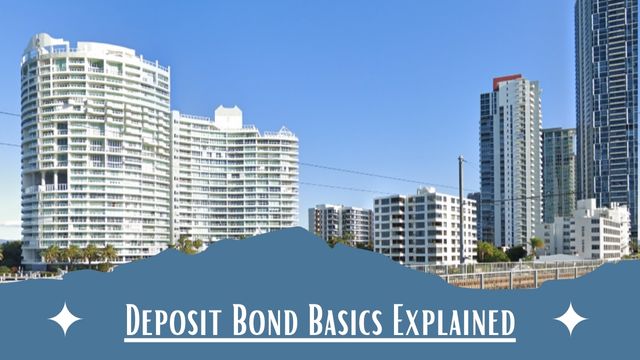Purchasing a first home is a dream cherished by many, especially when the landscape of the Australian property market can be at times competitive.
Aspiring homeowners often find themselves navigating a maze of financial planning, market research, and strategic decision-making. With the right strategies and insights, this journey can transform from a daunting challenge into a rewarding experience. This guide helps to provide first home buyers with advice to pave their path towards homeownership in Australia.
1. Know What to Expect

Entering the world of homeownership in Australia requires not just enthusiasm but also a keen understanding of the landscape. Begin by immersing yourself in thorough research of prospective areas. It’s intriguing how two suburbs a stone’s throw from one another, could have drastically different property values.
You may find that local amenities, from the latest infrastructure projects like a train station to basic facilities like schools and parks, significantly influence these values. Another element to consider that I hear more often than not is the overall safety of the neighbourhood, as areas with low crime rates tend to be more desirable, leading to a hike in property prices.
Even after narrowing down on the perfect locality and home, it’s essential to recognize that the upfront price is just the tip of the iceberg. Transfer Duty also known as Stamp duty, Lenders Mortgage Insurance (LMI) and other costs can take buyers by surprise.
Then there are inspection fees to help with finding structural nightmares. Factor in legal fees, the cost of potential initial repairs or modifications, and even the price of moving, and you’ll find that the total can be considerably higher than the property’s listed price.
2. Start Your Savings Habits
The journey for many to gain savings for a home loan deposit begins with a single step. While many start saving a portion of their pay without an issue, consistency is where the challenge lies.
One trick that many swear by is having your weekly savings goal deducted from your pay. By setting up a bank transfer to a different savings account every time you are paid, you subtly shift saving from an active chore to a passive routine.
Regularly revisiting your financial growth is as crucial as the act of saving itself. By consistently monitoring your progress, you can adjust your saving rate, cut back on non-essential expenditures, or even occasionally reward yourself when you hit certain milestones. This keeps the journey balanced and motivating.
3. Address Your Debts
Focusing on your debts can be a significant step toward building your savings. Debts with high interest, such as credit cards, can be insidiously detrimental, quietly draining what could have been potential savings. Tackling these debts head-on can feel daunting, but there’s a method to the madness.
Some advocate for the “snowball method”, where you pay off smaller debts first, creating a momentum that motivates you to address bigger loans. Others swear by the “avalanche method”, focusing on clearing high-interest debts first, which can be more financially efficient in the long run.
One of the keys to reducing debt isn’t just addressing past debts but also being wary of accumulating new ones. This doesn’t mean living a life devoid of any credit-based facilities. It’s about thinking about when to borrow and ensuring it aligns with your long-term homeownership goal.
Lastly, if the weight of debt ever feels crushing there are professional debt counsellors who can provide strategies or even help in negotiations with creditors. You may qualify for free debt services but you’ll need to enquire with each company to ensure you are eligible.
4. The Power of Compounding

The beauty of compound interest lies in its simplicity: your money makes more money. When we hear stories of individuals who’ve managed to amass significant savings, the secret often isn’t just a high income or extreme frugality, but using the power of compounding.
There are multiple ways you can compound your money but each comes with its own risk. High-interest savings accounts are of these options useful when keeping the money for a home loan deposit. Consistently adding to your savings not only do you increase the principal amount, but can potentially also add interest earned while that principal grows too.
5. Government Grants and Concessions
The Australian government has been aware of the challenges faced by first home buyers and because of this, it has rolled out several grants and concessions over time to provide some relief. These can be beneficial by easing the financial burden of purchasing a home. Some of the key aids and concessions include:
- First Home Owners Grant (FHOG): A one-time grant designed specifically for eligible first home buyers.
- Transfer Duty Concessions: Depending on your location and the property’s value, you might be eligible for a considerable reduction in transfer duty. Also known as Stamp Duty.
- First Home Guarantee Scheme (FHBG): Support first home owners buying a home with a deposit as low as 5%.
If you are interested in what grants may be available to you contact us or look at your state government or specific grant government websites.
By factoring in these grants and concessions, your goal of homeownership might be closer than you initially estimated. These grants, concessions and schemes change over time as new policies or modifications of existing ones to address current market conditions or economic challenges.
6. Seek Expert Advice
The property market can often feel like a labyrinth. Expert advice doesn’t just offer clarity but could also open doors to opportunities you were unaware of.
Mortgage brokers like us at Read Finance can provide valuable advice based on your specific needs and goals. Beyond applying for a loan based on your needs, goals and input they also understand its terms, interest rates, and potential pitfalls. This is how they provide a valuable service to you.
Financial advisors, on the other hand, take a more holistic view. They may be able to assist in:
- Streamlining your savings strategy
- Offering investment advice
- Assisting with budgeting and expenditure tracking
Real estate and buyer agents can show you properties that they have available to them. Providing advice and insight into the market. Just be aware that the real estate agent works for the seller while a buyer’s agent works for you.
Together, with the right guidance, the path to home ownership can become less about avoiding pitfalls and more about making informed, strategic decisions.
7. Alternative Revenue Streams
In today’s gig economy, opportunities for additional income are more abundant than ever before. Many first home buyers find that their primary job, while stable, may not provide the acceleration they need to meet their savings goals in the desired timeline. Diversifying your income streams can not only boost your savings rate but also provide a safety net against unforeseen financial challenges.
For instance, freelancing or part-time work in areas aligned with one’s skills or passions can prove lucrative. Whether it’s graphic design, writing, tutoring, or even pet-sitting, platforms like Upwork, Freelancer, and Airtasker could have access to additional work for you.
If available, you could rent out a vacant room or parking spot. Platforms like Airbnb have made it easier for individuals to monetise their unused spaces, turning them into significant monthly earnings with relatively little effort.
Just be aware that when going for a home loan each lender has their own criteria on how they assess additional income. Some lenders will shave off a percentage of the income you earn.
For example: Instead of taking into consideration all of your income from a second job, they may only let you use 80% of it.
8. Cut Down Unnecessary Expenditures
Budgeting isn’t just about saving but also about spending smartly. Knowing where your money is going and how to take it further can help in the savings process for a deposit on a property.
Here are some everyday savings tips:
- Home-Cooked Meals: Regular dining out or takeaway might seem innocuous, but it can amount to a significant monthly expense. Shifting to home-cooked meals can lead to considerable savings.
- Review Subscriptions: From streaming services to monthly magazines, it’s easy to accumulate subscriptions we hardly use. Regularly reviewing and removing these can free up funds.
- DIY Solutions: Instead of hiring services for tasks like cleaning, gardening, or even basic home repairs, considering a DIY approach can save money.
- Refinance Loans: If you have various loans and credit cards there may be an option to combine them into one repayment at a lower rate.
9. Stay Updated and Educate Yourself
Knowledge is power, especially in the rapidly evolving landscape of the Australian property market. Staying updated doesn’t just mean being aware of price trends but understanding the larger economic, political, and social factors that influence these trends.
Regularly perusing property-focused blogs, attending webinars, and even joining community groups can provide valuable insights. Platforms like the blog on Read Finance could offer a treasure trove of information, from government policies to property.
Consider also joining local community groups or forums. These platforms can provide the benefit of firsthand knowledge from experienced individuals in the areas you’re looking to buy into.



